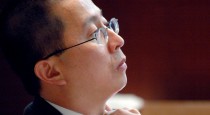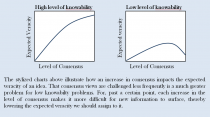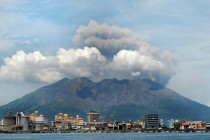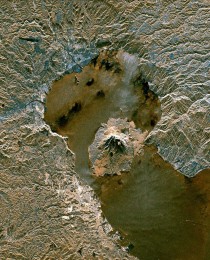
Dr. Willie Soon is an astrophysicist in the Solar, Stellar and Planetary Sciences Division of the Harvard-Smithsonian Center for Astrophysics in Cambridge, Massachusetts. He began as a post-doctoral fellow in 1991 and took his scientist position in 1997. His subsequent career is a textbook example of speaking truth to power and bravery facing the consequences.
Dr. Soon produced an important series of astrophysics papers on the sun-climate connection beginning in 1994 and received positive discussion in the United Nations Intergovernmental Panel on Climate Change’s second and third assessment reports (1996 and 2001). In that era, the IPCC still admitted uncertainties about human influence, despite green NGO pressure and U.S. State Department insistence on finding a “smoking gun” in weak data. Even Bert Bolin, co-creator and first chairman of the IPCC (1988-1997), deplored the denial of uncertainty he saw rising. In his 2007 History of the Science and Politics of Climate Change (page 112), Bolin wrote, “It was non-governmental groups of environmentalists, supported by the mass media who were the ones exaggerating the conclusions that had been carefully formulated by the IPCC.” In 1997 Bolin went so far as to tell the Associated Press, “Global warming is not something you can ‘prove.’ You try to collect evidence and thereby a picture emerges.”
Dr. Soon’s study of solar influence on climate behavior made him a target for alarmists, but he had defenders. In 2013, the Boston Globe acknowledged his guts and sound science with a quote from iconic science leader, Freeman Dyson: “The whole point of science is to question accepted dogmas. For that reason, I respect Willie Soon as a good scientist and a courageous citizen.”
In February of 2015, Greenpeace agent Kert Davies, a vocal critic since 1997, falsely accused Dr. Soon of wrongfully taking fossil-fuel company grants by failing to disclose “conflicts of interest” to an academic journal. The journal’s editors and the Smithsonian Institution found no violation of their disclosure or conflict of interest rules. However, the Greenpeace accusation caused a clamor around the world as lazy liberal reporters repeated it for major media with no fact-checking for accuracy.
The Greenpeace ruckus brought high-level Obama administration pressure on the Harvard-Smithsonian Center to silence climate skeptics - Vice President Joe Biden is a member of Smithsonian’s Board of Regents. The Institution responded with an elaborate new Directive on Standards of Conduct that forced its employees to wade through bureaucratic rules replete with an Ethics Counselor and a “Loyalty to the Smithsonian” clause of a sort not seen since the McCarthy Red Scare.
The Institution announced an Inspector General investigation of Soon, combing his emails and announcing that he had broken no rules. That seriously stung the NGO-Media-Politician coalition, which launched more attacks.
Ten days apart in the Spring of 2016, two outlets published stories scurrilously demonizing Dr. Soon. Both articles were long on bias and bogus claims but short on facts. The two activist/writers, David Hasemyer of the controversial Rockefeller-funded InsideClimateNews and Paul Basken of the for-profit Delaware corporation, The Chronicle of Higher Education, seem to have forgotten journalistic ethics and the facts.
Basken’s March 25 item, “A Year After a Climate-Change Controversy, Smithsonian and Journals Still Seek Balance on Disclosure Rules,” bemoans the fact that last year’s load of Greenpeace false accusations hadn’t caused the Institution to impose harsh enough rules to get rid of all scientists with climate skeptic views. Any fact checking didn’t show.
Hasemyer’s April 5, 2016 piece, “Smithsonian Gives Nod to More ‘Dark Money’ Funding for Willie Soon,” bewails the fact that Soon’s employer didn’t follow their playbook but approved a $65,000 grant from the non-profit Donors Trust, which is despised by greens because it uses anonymous “donor-advised-funds.” Such “dark money” grants are an IRS-approved shield pioneered decades ago by the far-left Tides Foundation for its $1.1 billion worth of grants to radicals, much of it “dark,” which Hasemyer didn’t seem to recall.
Hasemyer also neglected to note that even if Donors Trust’s “dark” grant came from ExxonMobil Foundation, the fossil-fuel philanthropy also gave universities $64,674,989; museums $2,771,150; the Red Cross $2,549,434; the Conservation Fund, Nature Conservancy and similar groups $1,210,000; Habitat for Humanity $798,000, Ducks Unlimited, $402,000 and many more from 1998 to 2014 according to IRS records. Will they be demonized as shills too?
Neither Hasemyer nor Basken displayed any familiarity with what scientists have to go through in order to do science in the Harvard-Smithsonian Center for Astrophysics or how it works, which is the bedrock of sound, ethical journalism on the topic.
The Center combines the Harvard College Observatory and the Smithsonian Astrophysical Observatory under a single director to pursue studies of the universe. It is comprised of six divisions, and Dr. Soon is listed in the Solar, Stellar, and Planetary Sciences (SSP) Division.
About one-third of the Center’s scientists, including Willie Soon, are employed in what are called “Smithsonian Trust positions.” These positions are held mostly by PhD specialists, unlike Federal civil service. According to the Smithsonian Employee Handbook, Federal position paychecks are paid from the Smithsonian’s annual Federal appropriation and Trust position paychecks are paid from the Smithsonian’s Trust Fund. Scientists in Trust positions are paid by the hour with a Smithsonian paycheck.
Scientists in Trust positions must find donors who will give the Smithsonian grants that pay for the science. An employee information document states, “Obtaining competitive funding is an important part of the scientists’ jobs and a measure of their career success.” The grants always go directly to the Smithsonian for the science project with a 30 to 40 percent cut off the top for the Institution’s management and overhead, but never go directly to the scientist. Media attacks on Dr. Soon misrepresenting his success at this duty as nefarious are either ignorant or disingenuous.
Scientists in Trust positions must follow exacting procedures in order to obtain grants for their science according to the rules in the elaborate Contract and Grant Administration document.
The prescribed steps most relevant to Dr. Soon’s position are: First, the scientists must prepare a draft of their proposed scientific project or work. The draft then goes for pre-approval to the Director’s Office, held since 2004 by distinguished astronomer Charles Alcock. The scientists must give the Director suggestions for potential funders, but all decisions are the Director’s.
If the Director approves the draft proposal, he signs it and gives it to the Grant Office, which prepares the presentation package, including a budget, the approved proposal, and a cover letter formally requesting a grant. The Director signs the cover letter and the grant officer sends it to the potential donor.
The donor replies to the Director saying yes or no. If yes, the reply may contain a pledge to be paid when invoiced by the Center or direct payment to Smithsonian, which handles all of the Center’s money. The scientist who performs the project may not know and has no need to know who gave the grant.
When scientists perform an “off the clock” (unpaid) study to be published in a peer-reviewed journal and pays for it out of personal funds, as Willie Soon has on numerous occasions over the years, all Smithsonian approvals and checkpoints must still be passed. Claims that Dr. Soon has pocketed any off-the-clock grant money have all been shown false.
Writers who accuse Dr. Soon of wrongdoing despite firm evidence to the contrary are violating the Code of Ethics of the Society of Professional Journalists, which states, among many other points:
“Ethical journalism should be accurate and fair. Journalists should examine the ways their values and experiences may shape their reporting. Journalists should support the open and civil exchange of views, even views they find repugnant.”
The hostile coverage attacking Dr. Soon could hardly be considered ethical journalism by these professional standards. The writers and publishers of such unethical journalism should be brought to account.
----------------
In our view, the fact that so many scientists agree so closely about the [causes of the] earth’s warming is, itself, evidence of a lack of evidence for [human caused] global warming. - D. Ryan Brumberg and Matthew Brumberg
The latest nonsensus on consensus from Cook, Oreskes et al. has been published [link]. The title ‘Consensus on consensus’ pretty much sums up what the paper is about - they claim that the combined weight of all the climate consensus papers that finds >90% agreement by scientists should convince us that ‘97%’ is robust.
I have criticized the idea of the 97% consensus many times [link], and I will leave it to others to critique this latest paper.
In this post I focus on the paradox of the climate consensus, as articulated in a blog post by D. Ryan Brumberg and Matthew Brumberg entitled The Paradox of Consensus. Excerpts:
Consensus, in and of itself, is not necessarily a bad thing. The more easily testable and verifiable a theory, the less debate we would expect. But as a question becomes more complex and less testable, we would expect an increasing level of disagreement and a lessening of the consensus. On such topics, independent minds can - and should - differ.
We can use a simple formula to express how an idea’s popularity correlates with its verifiability. Let us introduce the K/C ratio - the ratio of “knowability,” a broad term loosely encapsulating how possible it is to reduce uncertainty about an idea’s correctness, to “consensus,” a measure of the idea’s popularity and general acceptance. Topics that are easily knowable (K ~ 1) should have a high degree of consensus (C ~ 1), whereas those that are impossible to verify (K ~ 0) should have a low degree of consensus (C ~ 0). When the ratio deviates too far from the perfect ratio of 1, either from too much consensus or too little, there is a mispricing of knowledge. Indeed, in cases of extreme deviations from the perfect ratio, additional support for a concept with such a lopsided K/C ratio increasingly subtracts from its potential veracity. This occurs because ideas exist not simply at a single temporal point, but rather evolve over the sweep of time. At the upper reaches of consensus, there is less updating of views to account for new information - so much so that supporters of the status quo tend to suppress new facts and hypothesis. Government agencies deny funding to ‘sham’ scientists, tenure boards dissuade young researchers from pursuing ‘the wrong’ track, and the establishment quashes ‘heretical’ ideas. Too high consensus (skewed K/C ratio) inhibits the ability of an idea to evolve towards truth.

While not always clear why the K/C ratio can become highly skewed, one interpretation is that more than just the search for knowledge is at play.
The scope of agreement achieved by the world’s climate scientists is breathtaking. To first approximation, around 97% agree that human activity, particularly carbon dioxide emissions, causes global warming. So many great minds cannot possibly be wrong, right?
Yet something nags us about this self-congratulatory consensus. Our intuition is that this narrow distribution of opinions yields a knowability to consensus ratio far removed from the perfect ratio of 1. To reach their conclusions, climate scientists have to (a) uncover the (historical) drivers of climate, (b) project the future path of these inputs and others that may arise, and (c) predict how recursive feedback loops interact over multi-decadal time horizons, all without being able to test their hypotheses against reality.
We would, therefore, expect this limit on empirical verifiability to birth widely divergent views on the path, causes, and consequences of earth’s future climate. In other arenas, only after a theory has been empirically verified has the scientific community coalesced around it. Even then, scientists continue to subject such theories to rigorous testing and debate.
Yet the expectation of a rich debate among scientists about climate change does not reconcile easily with the widely endorsed shibboleth that human activity will warm the globe dramatically and dangerously over the next one hundred years. Any discussion that doubts the fundamental premises of climate change is dismissed by the mainstream media and climate scientists as pseudo-science conducted by quacks or ideologues.
In our view, the fact that so many scientists agree so closely about the earth’s warming is, itself, evidence of a lack of evidence for global warming. Does this mean that climate change is not happening? Not necessarily. But it does mean that we should be wary of the meretricious arguments mustered in its defense.
JC reflections
This essay provides an important insight in the K/C ratio - the ratio of knowability to consensus.
There is genuine scientific consensus on the following points:
- global temperatures have increased overall since 1880
- humans are contributing to a rise in atmospheric CO2 concentrations
- CO2 emits and absorbs infrared radiation
For the most consequential issues, there remains considerable debate:
- whether the warming since 1950 has been dominated by human causes
- how much the planet will warm in the 21st century
- whether warming is ‘dangerous’
- whether radically reducing CO2 emissions will improve the climate and human well being
Leveraged by the consensus on the three points above that are not disputed, the climate ‘consensus’ is being sold as applying to all of the above, even the issues for which there remains considerable debate.
For past a certain point, each increase in the level of consensus makes it more difficult for new information to surface, thereby lowering the veracity we should assign to it.
The skewed scientific ‘consensus’ does indeed act to reinforce itself, through a range of professional incentives: ease of publishing results, particularly in high impact journals; success in funding; recognition from peers in terms of awards, promotions, etc.; media attention and publicity for research; appeal of the simplistic narrative that climate science can ‘save the world’; and a seat at the big policy tables.
The net result of this skewed ‘consensus’ is that inadequate attention is being paid to natural climate variability, and too many people, including scientists, assume that CO2 is a giant control knob that, if reduced, can eliminate bad weather, sea level rise, etc.
While not always clear why the K/C ratio can become highly skewed, one interpretation is that more than just the search for knowledge is at play.
Apart from the professional incentives described above, there are a range of political drivers that incentivize the consensus, including broad environmentalism, anti-fossil fuel sentiments, anti-capitalism sentiments, and a desire for world government that transcends national policies.
And finally, there is the seductiveness of identifying a simple cause of all of society’s problems, and a simple solution.
I think the Brumbergs are correct to conclude:
In our view, the fact that so many scientists agree so closely about the [causes of the] earth’s warming is, itself, evidence of a lack of evidence for [human caused] global warming.
Eliciting the opinion of experts is worthwhile, but it is important to clearly delineate which ‘experts’ should count:
There must be a sufficient number of others who did arrive (and continue to arrive) at the same conclusion through independent verification and testing.
A substantial majority of the individuals responding to the ‘expert’ surveys have not contributed to the primary literature on detection and attribution and have not conducted an independent assessment of this issue. Instead they have arrived at their conclusion based on the second-order evidence that a ‘consensus’ exists.
This consensus that has been manufactured by the IPCC in response to perceived desires of policy makers “makes it more difficult for new information to surface, thereby lowering the veracity we should assign to it.”
So, what have Cook, Oreskes et al. accomplished with their new paper? They are further reinforcing a very skewed consensus that is not defensible based upon our knowledge base.

Kagoshima cityscape against the background of Sakurajima volcano. Japan, East Asia, 2009. By Mstyslav Chernov/Unframe/www.unframe.com (Own work) [CC BY-SA 3.0], via Wikimedia Commons
Japan has heightened monitoring on the Island of Kyushu, in the wake of a 6.4 Earthquake. Kyushu is a highly volcanic region which includes a the Aira Caldera and Mount Aso, VEI-7 volcanoes. The last major VEI-7 eruption, the eruption of Mount Tambora, is associated with the year without a Summer, a period of widespread famine and crop failure which occurred in 1816.
Ranker notes: “One of the most recently troubling calderas in the world is the 150-square-mile Aira caldera in southern Japan, on the edge of which sits the city of Kagoshima. 22,000 years ago 14 cubic miles of material burped out of the ground and formed the Aira caldera, which is now largely Kagoshima Bay. That is equal to about 50 Mount St. Helens eruptions. The Sakura-jima volcano, which forms part of the Aira caldera, has been active on and off for the past century and still causes earthquakes today, indicating that the caldera itself is far from sleeping.”

Read more.
If, and this is a big if, this situation develops into a Tambora scale explosive eruption, the results could be devastating, both for Japan, and potentially for the entire Northern Hemisphere. Modern transportation may mitigate some of the effects, by allowing food from the Southern Hemisphere to be supplied to regions experiencing crop failures. But the resulting spike in food prices would be likely to cause severe hardship for the world’s poor.
Meanwhile our politicians pointlessly fritter away their time and our money, conducting climate witch hunts, and plotting to bankrupt affordable energy suppliers.


